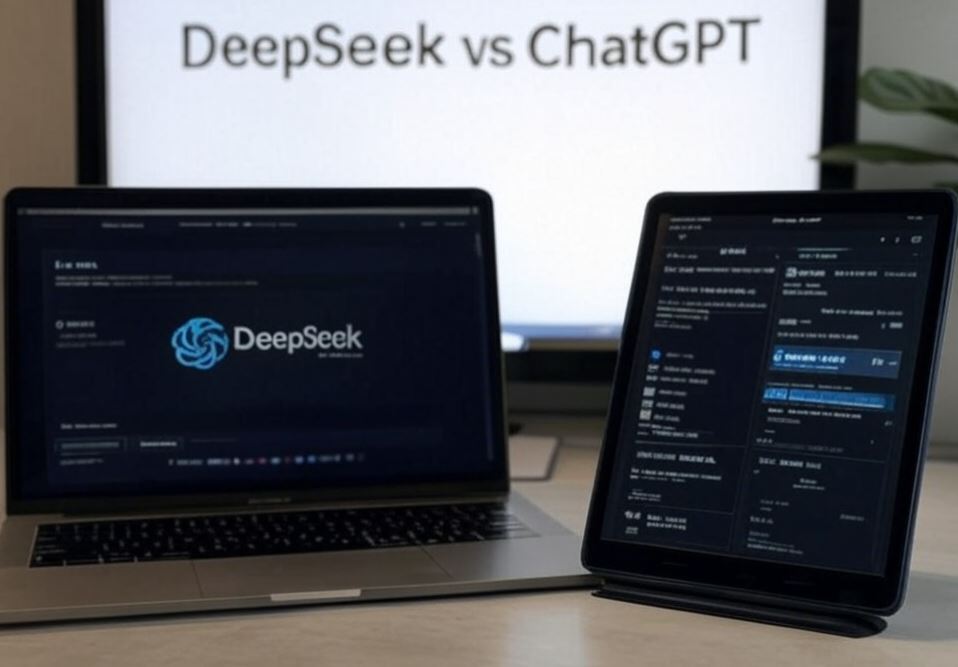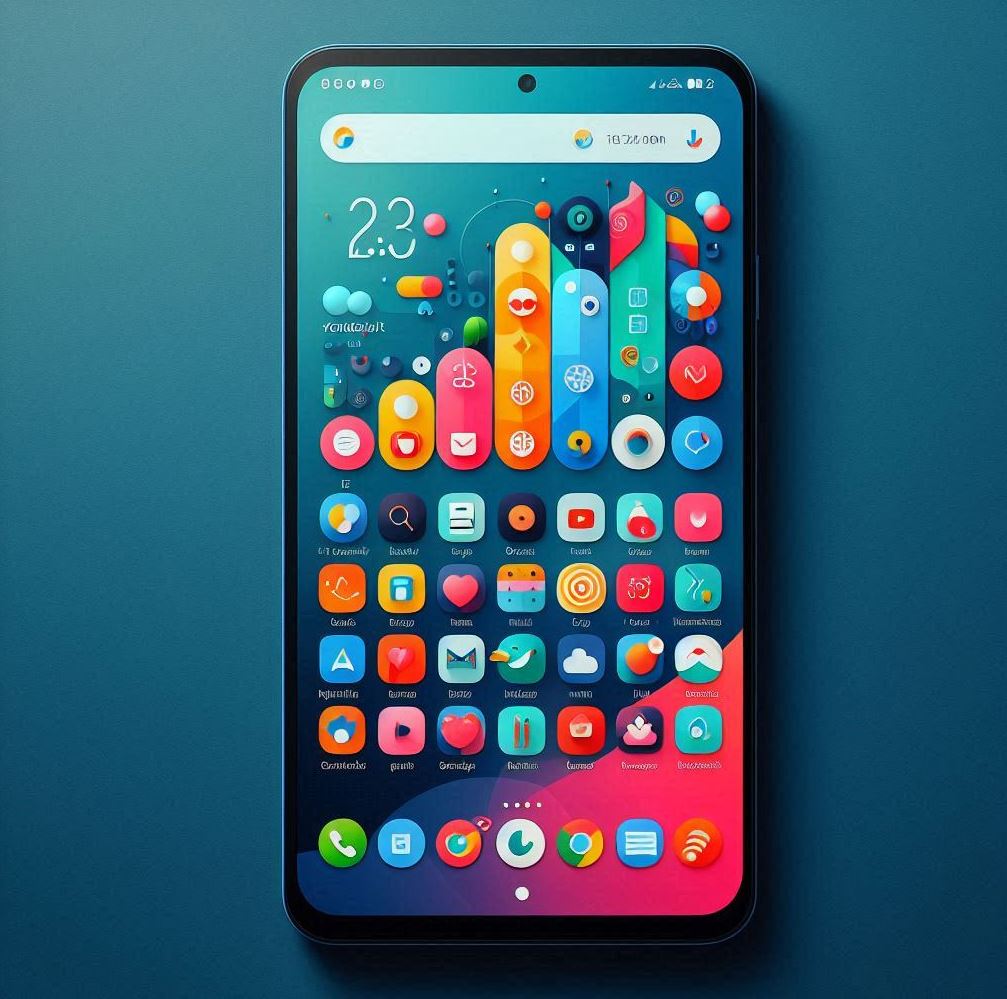
In the rapidly evolving landscape of artificial intelligence, two prominent players have emerged as frontrunners in the race for AI supremacy: DeepSeek and ChatGPT. As these advanced language models continue to push the boundaries of what's possible in natural language processing and generation, it's crucial to understand their similarities, differences, and unique strengths.
This comparison will delve into various aspects of both AI systems, providing insights into their capabilities, limitations, and potential impact on the future of AI technology.
Background and Development
- DeepSeek, a relatively new entrant in the AI arena, was developed by a Chinese startup founded in 2023. Despite its recent emergence, DeepSeek has quickly gained traction, becoming the top free app on Apple's App Store. The company's flagship model, DeepSeek-R1, was introduced on January 20, 2025, positioning itself as a cost-effective alternative to ChatGPT.
- On the other hand, ChatGPT, developed by OpenAI, has been a dominant force in the AI landscape since its release. Built on the proprietary GPT-4 architecture, ChatGPT has set the standard for large language models, boasting impressive capabilities across a wide range of tasks.
Technology and Architecture
- DeepSeek employs cutting-edge techniques to deliver exceptional performance. The model utilizes Reinforcement Learning (RL) to enhance its reasoning abilities without relying heavily on supervised fine-tuning. It also implements a multi-stage training process to improve efficiency across various tasks. One of DeepSeek's key innovations is its use of a Mixture-of-Experts (MoE) architecture, which reduces memory usage while maintaining high performance.
- ChatGPT, in contrast, is built on OpenAI's proprietary GPT-4 architecture. It employs Reinforcement Learning with Human Feedback (RLHF) to ensure user-centric and contextually appropriate responses. The model is trained on diverse datasets with an emphasis on conversational tasks, contributing to its versatility and natural language understanding.
Training and Development Costs
- One of the most striking differences between DeepSeek and ChatGPT lies in their development costs. DeepSeek's engineering team revealed that they only needed about $6 million in raw computing power to develop their new system. This is approximately ten times less than the investment made by companies like Meta in their latest AI technology.
- In contrast, ChatGPT's development is estimated to have cost over $100 million. This significant disparity in development costs highlights DeepSeek's efficiency in resource utilization and optimization.
Performance and Capabilities
Both DeepSeek and ChatGPT excel in various areas, each with its own strengths and weaknesses.
DeepSeek has shown impressive capabilities in technical tasks such as coding and mathematical problem-solving. It achieves outstanding results in coding benchmarks, with a HumanEval Pass@1 score of 73.78%. In mathematics, it demonstrates high proficiency, scoring 84.1% on the GSM8K 0-shot test. These results position DeepSeek as a powerful tool for developers and those working on technical projects.
ChatGPT, while also strong in coding and math, is particularly noted for its excellence in creative writing, conversational tasks, and general knowledge. It excels in storytelling, humor, and generating marketing copy. ChatGPT's strength lies in its ability to understand context and provide nuanced responses across a wide range of topics.
In terms of reasoning capabilities, both models perform admirably. DeepSeek matches or slightly surpasses ChatGPT in reasoning tasks, as demonstrated by its performance on benchmarks like MMLU and ChineseQA. Its multi-lingual training gives it an edge in handling Chinese language tasks. ChatGPT, however, maintains its position as a leader in reasoning and contextual understanding, although the performance gap narrows when compared to DeepSeek R1.
Accessibility and Cost
DeepSeek offers free access to advanced features that are typically locked behind premium subscriptions on other platforms. This includes access to the most advanced models, web-search capabilities, and file uploads. For developers, DeepSeek charges $0.14 per million tokens, making it significantly more cost-effective than many competitors.
ChatGPT operates on a freemium model, with basic features available for free and advanced capabilities locked behind a subscription. The ChatGPT Plus subscription starts at $20 per month, providing access to GPT-4, plugins, and other premium features.
This stark difference in pricing makes DeepSeek a more accessible option for individual users and small businesses, potentially democratizing access to advanced AI capabilities.
Open-Source vs. Proprietary Models
One of the key differentiators between DeepSeek and ChatGPT is their approach to model accessibility. DeepSeek embraces an open-source philosophy, making its models freely available to the public. This approach fosters an environment of shared innovation, enabling smaller players to fine-tune and adapt the model for their specific needs.
ChatGPT, developed by OpenAI, operates on a closed-source model. While this allows for tighter control over the model's applications and potential misuse, it limits the ability of the wider community to contribute to or modify the underlying technology.
The open-source nature of DeepSeek presents both opportunities and challenges. On one hand, it promotes transparency and allows for rapid improvement through community contributions. On the other hand, it raises concerns about potential misuse or fine-tuning for harmful purposes.
Hardware Requirements and Efficiency
DeepSeek's efficient architecture allows it to run on minimal hardware requirements. The model can operate effectively on older Nvidia GPUs, making it accessible to a wider range of users and organizations.
ChatGPT, due to its more complex architecture and larger model size, typically requires high-end GPUs for optimal performance. This higher hardware requirement can be a barrier to entry for some users or organizations with limited computing resources.
Training Efficiency and Time-to-Market
DeepSeek has demonstrated exceptional efficiency in its training process. The R1 model was reportedly trained in less than two months, showcasing DeepSeek's ability to reduce time-to-market without compromising on quality.
In comparison, OpenAI's models, including ChatGPT, often require extended training durations due to the complexity of their architectures and the scale of datasets used. While these efforts result in highly capable models, they also contribute to longer development cycles and higher overall costs.
User Interface and Experience
Both DeepSeek and ChatGPT offer user-friendly interfaces that allow for easy interaction with the AI. Users can engage with both systems by typing text or uploading files and images. The similarity in interface design makes it easy for users familiar with one system to adapt to the other.
However, some users report that DeepSeek offers a freer, more creative writing style with minimal censorship, allowing for exploration of a wider range of topics and conversational styles. ChatGPT, while excelling in structured and coherent content generation, may feel overly formal or constrained to some users due to stricter alignment through RLHF.
Multilingual Capabilities
Both DeepSeek and ChatGPT demonstrate strong multilingual capabilities, but with some differences. DeepSeek's multi-lingual training gives it a particular edge in handling Chinese language tasks, reflecting its origins and development focus.
ChatGPT, trained on a diverse range of languages, offers broad multilingual support. However, its performance can vary depending on the specific language and task at hand.
Ethical Considerations and Bias
As with all AI systems, both DeepSeek and ChatGPT face challenges related to ethical considerations and potential biases. ChatGPT has been noted for its efforts to mitigate harmful outputs and biases through careful training and content filtering. However, this can sometimes result in overly cautious responses or refusal to engage with certain topics.
DeepSeek, with its more open approach, may offer fewer restrictions on content generation. While this can lead to more creative and unrestricted outputs, it also raises concerns about the potential for generating harmful or biased content.
The influence of cultural and political factors on these AI models is also a consideration. DeepSeek, developed in China, may reflect different cultural norms and values compared to ChatGPT, which was primarily developed in a Western context.
Real-World Applications
Both DeepSeek and ChatGPT have found applications across various industries and use cases. DeepSeek's strength in coding and technical tasks makes it particularly valuable in software development, data analysis, and scientific research.
ChatGPT's versatility has led to its adoption in customer service, content creation, educational support, and even creative writing. Its ability to understand context and generate human-like responses makes it well-suited for conversational applications.
Future Prospects and Industry Impact
The emergence of DeepSeek as a strong competitor to ChatGPT has significant implications for the AI industry. DeepSeek's ability to achieve comparable performance at a fraction of the cost challenges existing notions about the resources required to develop competitive AI models.
This development could potentially lead to a democratization of AI technology, making advanced language models more accessible to a wider range of organizations and individuals. It may also spur innovation in the field, as companies seek to optimize their models and reduce costs to remain competitive.
The open-source nature of DeepSeek could accelerate the pace of innovation in AI, as researchers and developers around the world contribute to its improvement. This collaborative approach contrasts with the more closed ecosystems of companies like OpenAI and could lead to faster advancements in certain areas of AI research.
Conclusion
The comparison between DeepSeek and ChatGPT reveals two powerful AI systems, each with its own strengths and unique characteristics. DeepSeek impresses with its cost-efficiency, open-source approach, and strong performance in technical tasks. ChatGPT maintains its position as a versatile and widely-adopted model, excelling in creative and conversational tasks.
Tips on SEO and Online Business
Next Articles
Previous Articles



